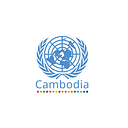What have we learned from integrating futures facing in our analysis?
By Amanda Mindus, formerly Peace and Social Cohesion Officer at UNRCO Cambodia
In late November 2020, the UN Country Team in Cambodia convened for the second time in a future facing workshop as part of our Common Country Analysis (CCA). The Common Country Analysis is a fancy way of referring to a situational analysis produced by the UN. The analysis provides the basis for strategic messaging, programming and prioritization.
One of the first questions asked to the attendees during this workshop was “How often did you refer to the last analysis since the beginning of the year?“ Nearly one-third of the participants answered ‘never’. Clearly, there’s room for improvement.
When asked why the CCA is not commonly used, one of the participants bluntly stated: “No one reads a 100 paged document!” Surely, we are many who can recognize ourselves in this sentiment. UN analysis, generally speaking, tend to be static, long documents, gathering dust on a virtual shelf rather than serving as a key source of insight. By the time we finish our analysis, it is already out of date. Many within the UN system have come to the same conclusion — we need to think differently about how we better produce a solid evidence-base.
In Cambodia, we wanted to shift from producing static analysis to a process where we are able to yield more regular, up-to-date, and actionable information — without being unduly burdensome. We wanted a methodology that better taps into trends, so that we can be in a better position to respond to changes in a country by detecting them early. This is where futures foresight comes into play.
2020 has been a year where we have learned — amongst many other things — that we need to do things differently. The need for a more adaptive UN is clear. We wanted to use our work with analysis as a strategic opportunity to rethink and look ahead together. We have built an analysis process guided by four principles:
- It should be change-focused by capturing what’s on the horizon and what risks and opportunities this might bring.
- It is social by involving a wide array of colleagues.
- It is lightweight and accumulates evidence over time rather than all at once.
- It has a wider sensitivity by making use of alternative sources of information.
Together, these principles have guided us to create an analysis process that is able to identify and provide a deeper understanding of the underlying causes of critical development challenges and opportunities, as well as track progress towards actualizing the Sustainable Development Goals.
We are producing the CCA in a more agile way, using a two-tracked approach. One track will focus on drafting this year’s analytical update. This needed to be as light as possible by resting on existing analysis already put in place by the UN. The second track is the future foresight component. We brought in a future’s expert to help us design this process and hold workshops in future foresight. The idea is to conduct analysis and sense-making differently, and use the intelligence provided through workshops to allow us to better and in a more agile and timely way to adapt our programmatic response. The workshops were designed to gather intelligence of our colleagues to identify emerging changes and opportunities in Cambodia. Together, we asked ourselves, what is changing?
So, what have we learned so far from integrating futures foresight into our analysis processes? Where our work is ongoing and much remains ahead of us, some things have become evident. We have seen that when provided the opportunity to think and discuss together, colleagues are keen to take this convenience. This speaks of a need to continue to carve out time in our busy schedule to connect and learn from each other. In terms of futures facing methodology, we are still teething, but we are improving as a community of practice. It remains challenging to see signals of change and there is a strong tendency to elevate already known trends and development challenges rather than seeing what’s new. By improving our capacity to think ahead we will be better at anticipating changes and act preventively.
It’s easy to fall back to what we know and what we’re used to. To enable a more forward-looking UN, we need to change the architecture of how we organize ourselves. To practice new behaviours, we need new systems that are able to generate and encourage these behaviours. Our work to upgrade how we to deliver an up-to-date evidence-base is part of our larger efforts of making the UN up to the task. In the end, this is essential to make the UN more equipped to meet the challenges of tomorrow.
